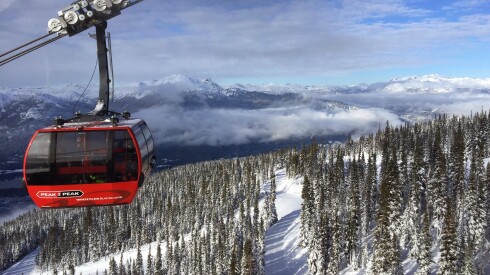To save time when going through airport security and to avoid having to leave behind bottles of sunscreen and conditioner, remember to limit anything liquid-y in your carry-on to 3.4 ounces (100 milliliters) or less.
One thing that may look solid but is considered a liquid? Peanut butter, according to TSA (hummus, too!). Read on to find out what other surprising items TSA prohibits in carry-on luggage.
Peanut butter
A peanut butter sandwich is a good snack to bring through TSA in your carry-on, but a jar of peanut butter will have to go in your checked bag. In March 2023, the airport security agency declared that it considers peanut butter to be a liquid and therefore subject to the 3.4-ounce limit for carry-on bags. Its reasoning: “A liquid has no definite shape and takes a shape dictated by its container.”
As disappointed as PB fans were by this news, the puns were almost enough to make up for it. Almost. As the TSA’s awesome Instagram reminded travelers in 2023: “Caught in a jam with more travel questions? Don’t skippy past our friends at AskTSA! You can now get your answers in a jiff through SMS. Simply text “TRAVEL” to AskTSA (275-872), the replies are smooth and never crunchy.”
Frosting
The fate of frosting is similar to that of its cousin peanut butter, and its doom was decided in Cupcakegate 2012 when a TSA agent in Las Vegas nixed a traveler’s cupcake-in-a-jar. In a blog post complete with a photo comparison of a regular cupcake and a jar version, the TSA backed the agent’s call, arguing that frosting was a gel and therefore fell under the 3.4-ounce rule.
“Unlike a thin layer of icing that resides on the top of most cupcakes,” the now-defunct TSA blog wrote, “this cupcake had a thick layer of icing inside a jar.”
TSA has not budged, and in a Scrooge move during the 2022 Christmas season, it reiterated the ban with a Tweet: “Oh snap! Traveling with your gingerbread kit? Solid foods and candy are good to go. If it’s frosting or icing not already on the house, it must follow our liquids rule in carry-on. Items need to be 3.4 oz. or less.” Points for more puns, I guess.
Freezer packs that aren’t frozen
If the freezer packs or bags of ice are solid, you’re good to go. But once that pack is melted or even partially slushy, it’s considered a liquid and is subject to the 3-1-1 rule. So if you’re, say, my mom, and you’re loading ice packs into a cooler of chopped liver to bring to your family for Rosh Hashanah dinner, make sure those packs are good and solid.
Alcohol over 140 proof
Even if it’s decanted into tiny bottles, any booze over 140 proof (that’s 70 percent alcohol) is banned from carry-on bags. But we have to admit, skipping the Everclear on a flight seems like a smart move—for a variety of reasons.
Some sports equipment
You can bring your lucky baseball, basketball, or soccer ball into the cabin—even bike chains and bike pumps are allowed. But the TSA draws the line at any sports equipment “that can be used as a bludgeon (such as bats and clubs).” So you’ll have to check golf clubs and baseball bats.
Wet pet food
If it’s too liquid-y, you’re likely to lose your pet’s lunch . . . to the TSA. So bring dry food and snacks if you’re flying with an animal, even if the food has been prescribed. Need we remind you to travel with pets appropriately, and to review all requirements and forms for service and emotional support animals? Cats love suitcases, so make sure yours didn’t climb inside before you head to the airport. This guy forgot.
Ammunition
Some people will find this an obvious prohibition, but many, many people still bring ammunition in their carry-ons. Or worse, actual guns (occasionally even hidden in peanut butter). While some firearms may be allowed in checked luggage (albeit with lots of rules), they are not allowed in the cabin—not even toys, cap guns, or historical replicas. And in case you were wondering, nunchucks, throwing stars, pocket knives, and saw blades are all prohibited too.
This article was originally published in 2023 and most recently updated on December 19, 2024, with current information.








